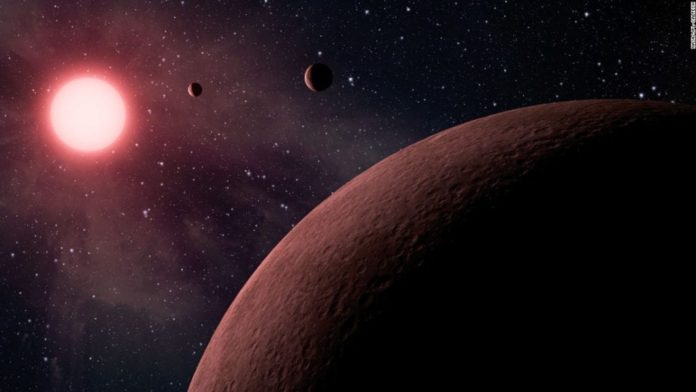A massive planet orbiting a tiny star thirty-one light-years from Earth has left the astronomers bewildered with astonishment. Astronomers reported finding the Jupiter-like planet – which they thought would not be able to exist – orbiting a star that is merely 12 per cent the mass of the Sun on September 26th. There may even be another big gas planet lurking in this unusual system. Space scientists found the mysterious world using a telescope at the Calar Alto Observatory in southern Spain.
The Spanish-led team reported that the planet did not form in the usual, gradual way, where a solid core of merging particles takes shape before a gas build-up, instead the planet seems to have arisen straight from gas. The Jupiter-like world is exceptionally large compared to its host star, counteracting a huge idea about the way planets form.
In the words of the lead author, Juan Carlos Morales of the Institute of Space Studies of Catalonia, the planet may be almost as big as its host star. He said in a mail, “It was very exciting finding this planet because it was completely unexpected”. He further added that the results indicated that a new population of massive planets may also exist around low-mass stars.
Professor Peter Wheatley, from the University of Warwick, said “It’s exciting because we’ve wondered for a long time whether giant planets like Jupiter and Saturn can form around such small stars,.” Planets normally form when dust and rocks bind together due to the gravitational pull of a star with the wad getting bigger each time until it’s large enough to hold on to its own gas atmosphere. But simulations carried out by the team suggest GJ 3512b could not have formed in this way. Its star is simply too minute to have the gravitational pull needed for GJ 3512b to form.

In keeping with Hubert Klahr from the Max Planck Institute for Astronomy in Heidelberg, Germany, “Until now, the only planets whose formation was compatible with disc instabilities were a handful of young, hot and very massive planets far away from their host stars. But with GJ 3512b, we now have an extraordinary candidate for a planet that could have emerged from the instability of a disc around a star with very little mass. This find prompts us to review our models.”
Furthermore, researchers say,” The newly found world, dubbed GJ 3512b, is so big that it can’t have formed in the way we think most planets do.” This led the team which consisted of Swiss, Spanish and German scientists to rethink how planets are born.
Further Reading: http://wordpress-695532-2297746.cloudwaysapps.com/what-does-the-picture-of-the-black-hole-really-tell-us/ http://wordpress-695532-2297746.cloudwaysapps.com/meteor-blast-over-bering-sea/



